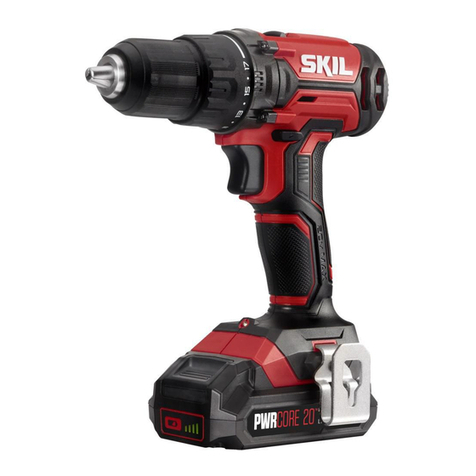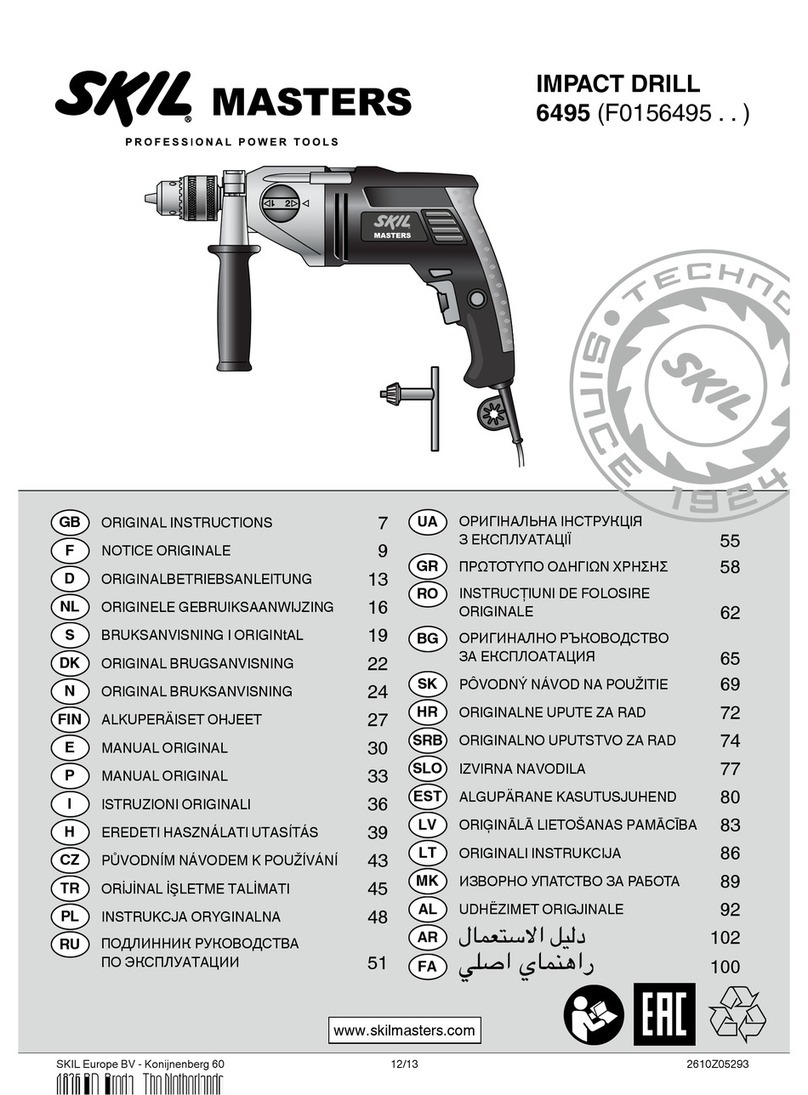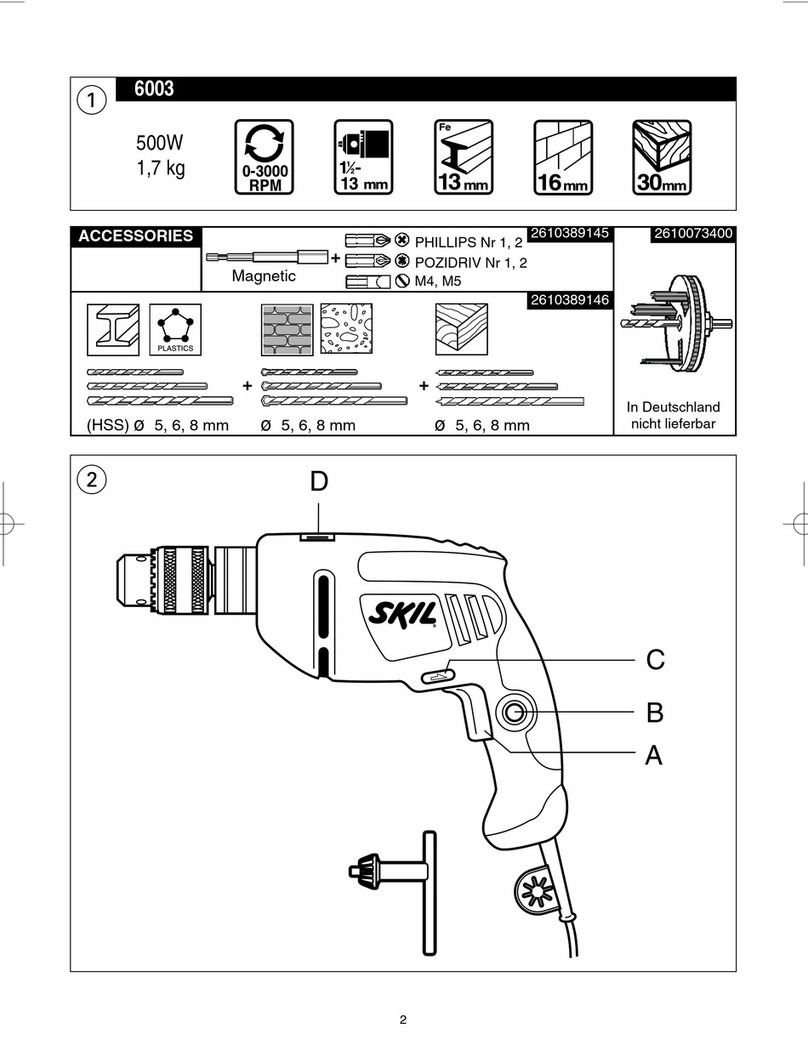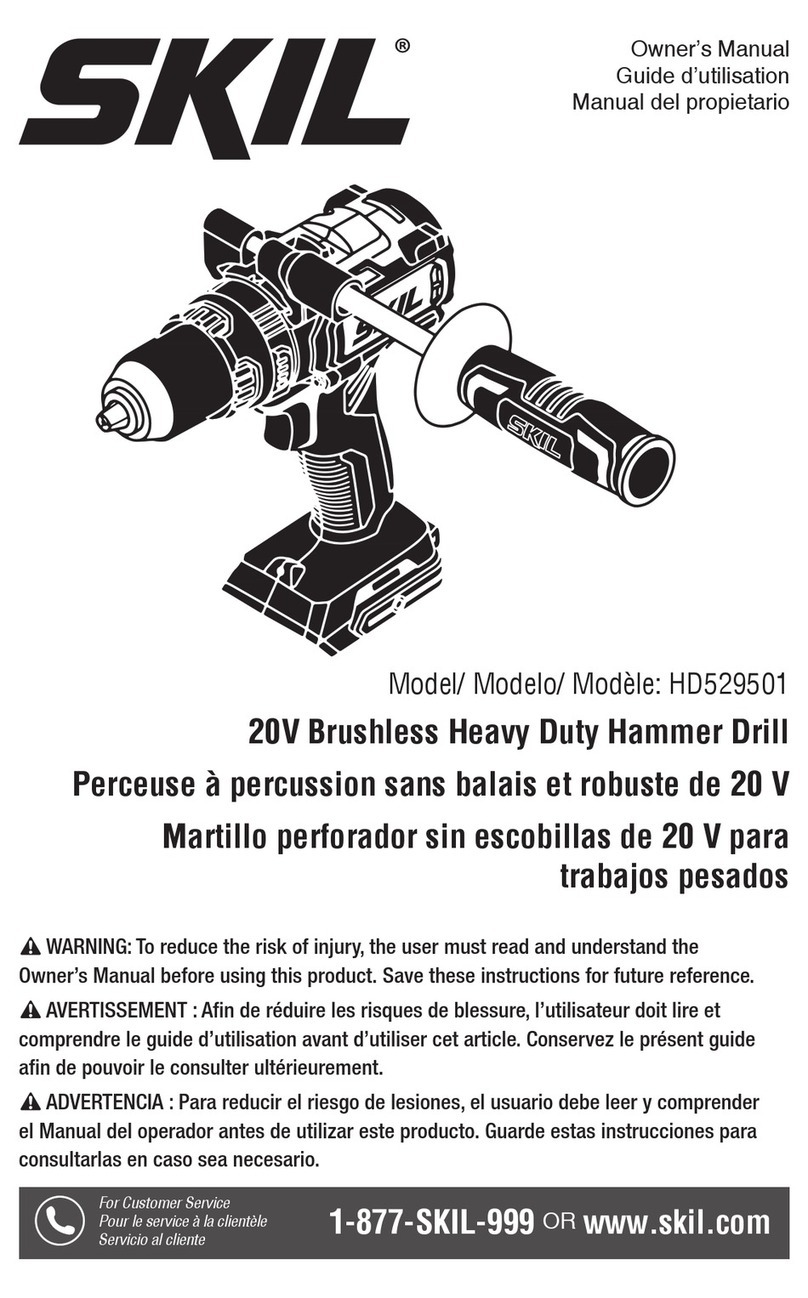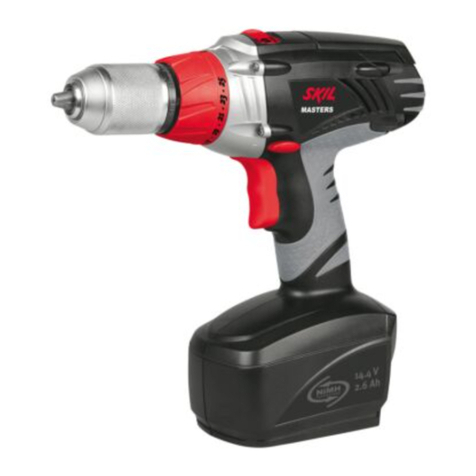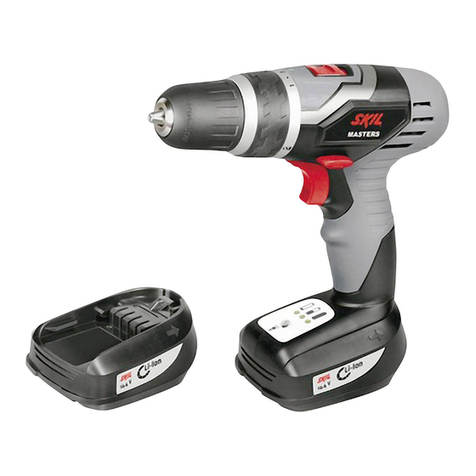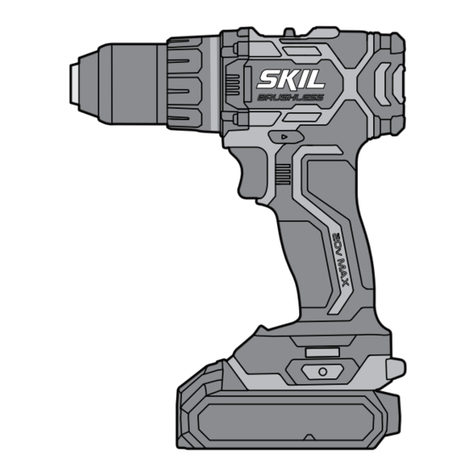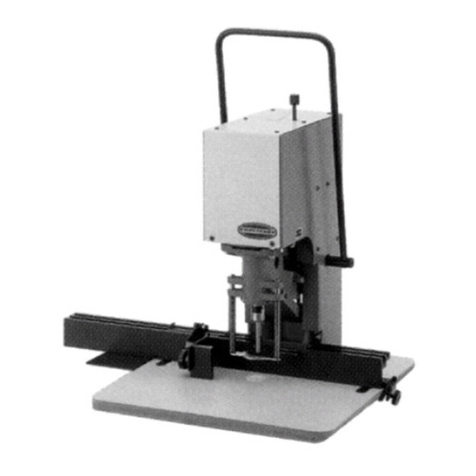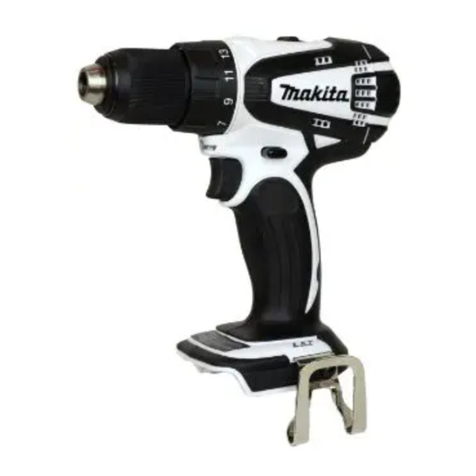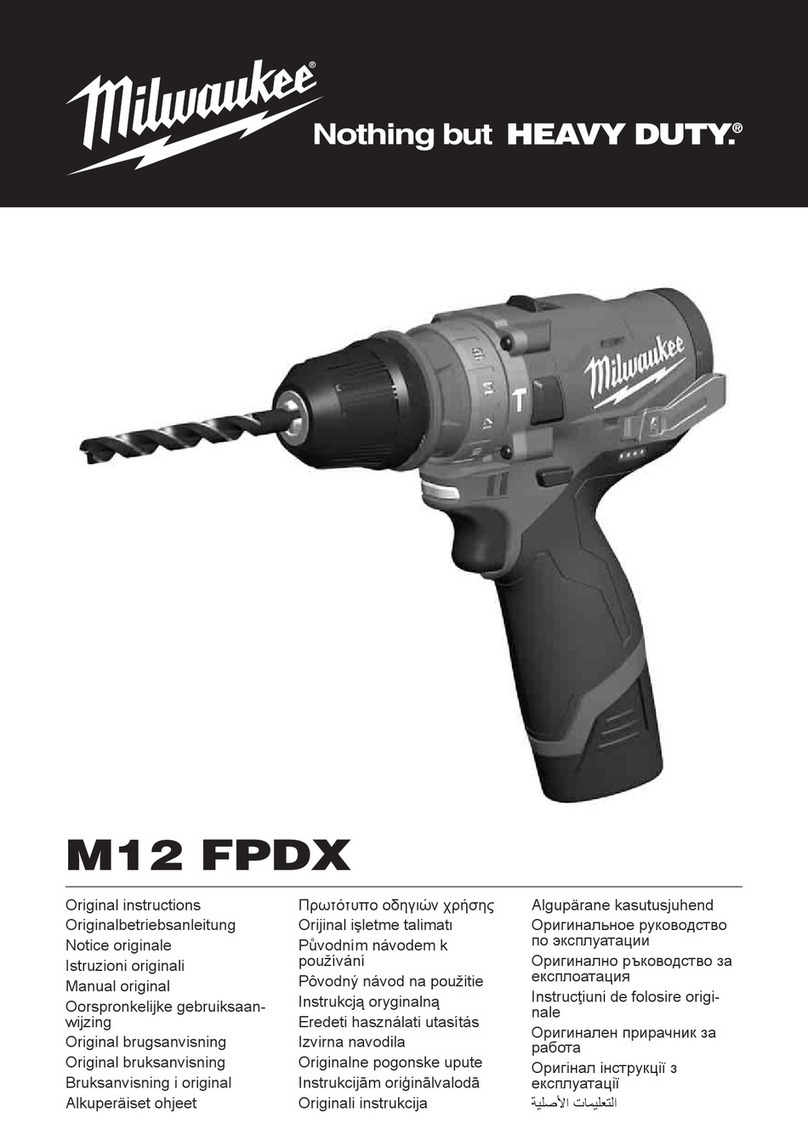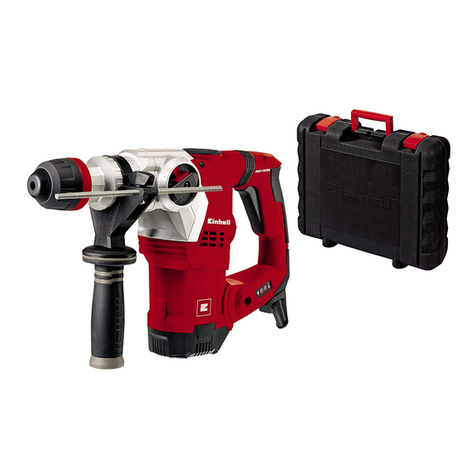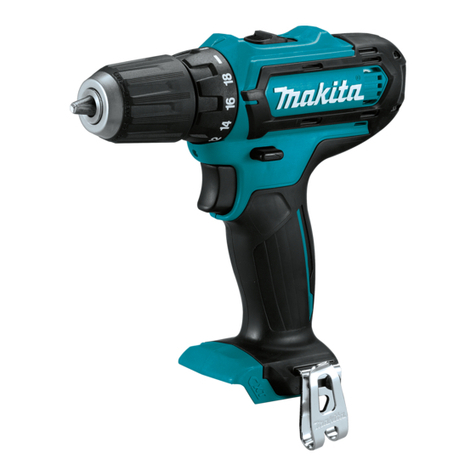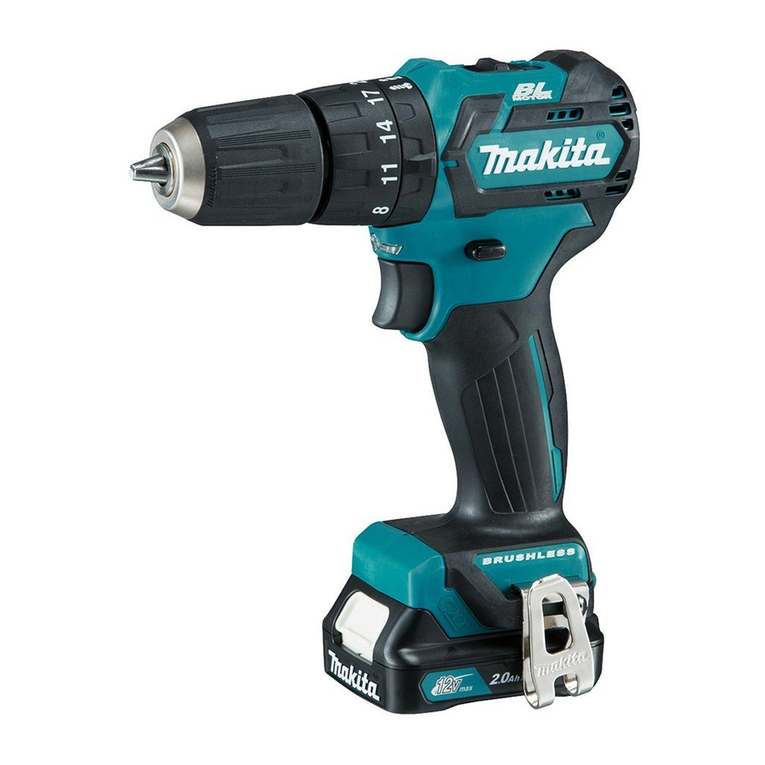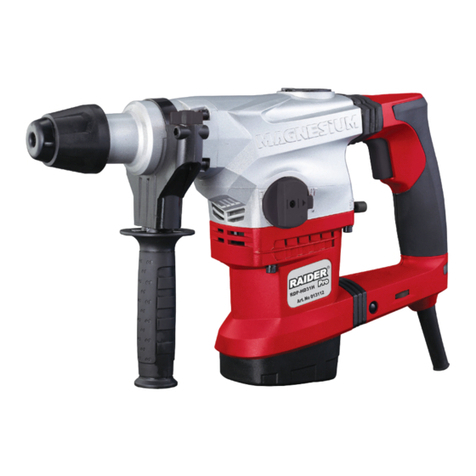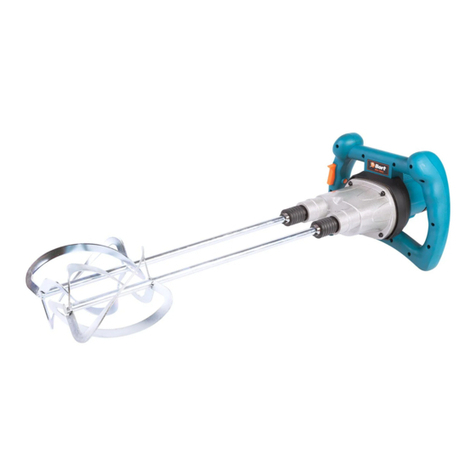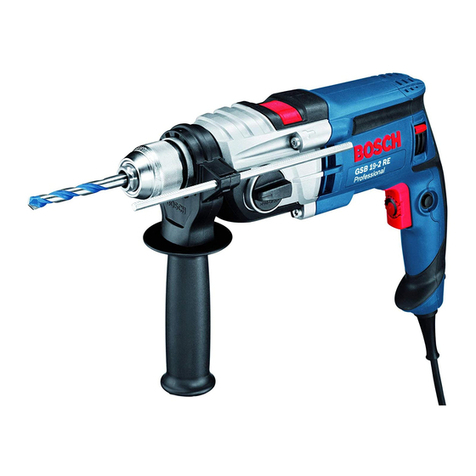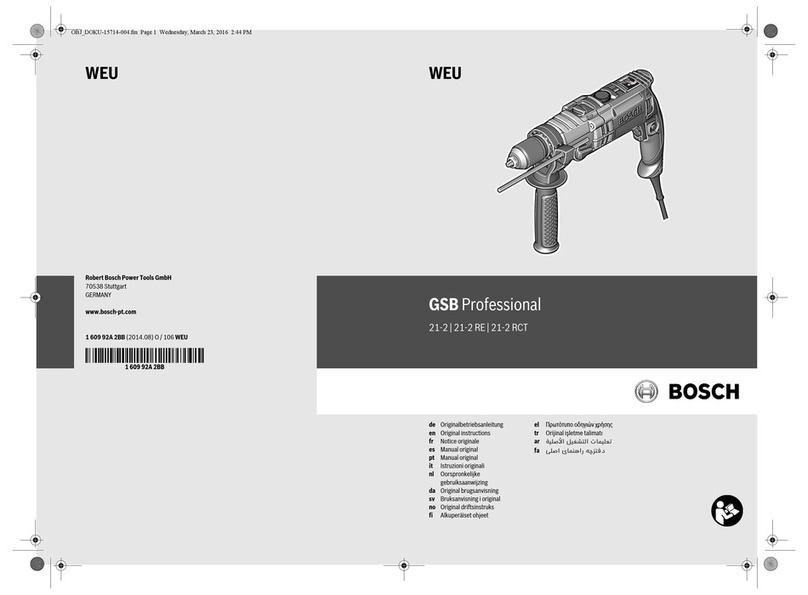-4-
Safety Rules for Cordless Drill / Drivers
Hold tool by insulated gripping surfaces
when performing an operation where the
cutting tools may contact hidden wiring.
Contact with a “live” wire will make exposed
metal parts of the tool “live” and shock the
operator.
Use clamps or other practical way to
secure and support the workpiece to a
stable platform. Holding the work by hand
or against your body is unstable and may
lead to loss of control.
Do not drill, fasten or break into existing
walls or other blind areas where electrical
wiring may exist. If this situation is
unavoidable, disconnect all fuses or circuit
breakers feeding this worksite.
Always hold the tool with both hands. If
the bit jams two hands will give you
maximum control over torque reaction or
kickback.
Always wear safety goggles or eye
protection when using this tool. Use a
dust mask or respirator for applications
which generate dust.
Secure the material being drilled. Never
hold it in your hand or across legs.
Unstable support can cause the drill bit to
bind causing loss of control and injury.
Disconnect battery pack from tool or
place the switch in the locked or off
position before making any assembly,
adjustments or changing accessories.
Such preventive safety measures reduce the
risk of starting the tool accidentally.
Position yourself to avoid being caught
between the tool or side handle and walls
or posts. Should the bit become bound or
jammed in the work, the reaction torque of
the tool could crush your hand or leg.
If the bit becomes bound in the
workpiece, release the trigger
immediately, reverse the direction of
rotation and slowly squeeze the trigger to
back out the bit. Be ready for a strong
reaction torque. The drill body will tend to
twist in the opposite direction as the drill bit is
rotating.
Do not grasp the tool or place your hands
too close to the spinning chuck or drill
bit. Your hand may be lacerated.
When installing a bit, insert the shank of
the bit well within the chuck. If the bit is
not inserted deep enough, the grip of the
chuck over the bit is reduced and the loss of
control is increased. After bit insertion, pull
on bit to ensure it is locked.
Do not use dull or damaged bits and
accessories. Dull or damaged bits have a
greater tendency to bind in the workpiece.
When removing the bit from the tool avoid
contact with skin and use proper
protective gloves when grasping the bit
or accessory. Accessories may be hot after
prolonged use.
Check to see that keys and adjusting
wrenches are removed from the drill
before switching the tool "ON". Keys or
wrenches can fly away at high velocity
striking you or a bystander.
Do not run the drill while carrying it at
your side. Aspinning drill bit could become
entangled with clothing and injury may result.
Some dust created by
power sanding, sawing,
grinding, drilling, and other construction
activities contains chemicals known to
cause cancer, birth defects or other
reproductive harm. Some examples of
these chemicals are:
•Lead from lead-based paints,
•Crystalline silica from bricks and cement
and other masonry products, and
•Arsenic and chromium from chemically-
treated lumber.
Your risk from these exposures varies,
depending on how often you do this type of
work. To reduce your exposure to these
chemicals: work in a well ventilated area, and
work with approved safety equipment, such
as those dust masks that are specially
designed to filter out microscopic particles.
!
WARNING
BM 1619X01525 06-06 6/14/06 11:30 AM Page 4



